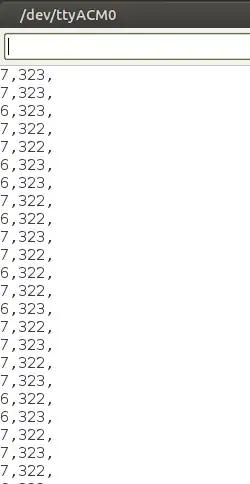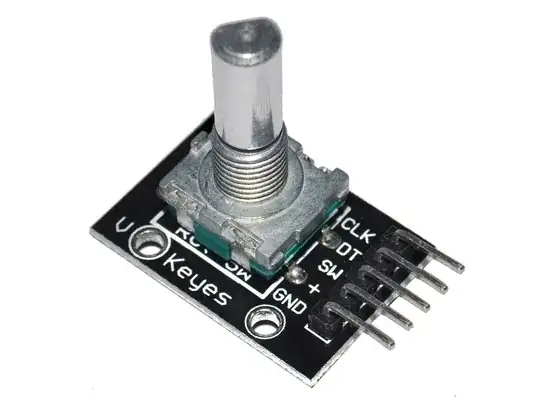I have a pair of potentiometers, on the Arduino, the output seems to drift, by one or 2 digits, back and forth. I would prefer they were read as one fixed value, without variation when their knobs are not turning. You can see in the image, the first and second values are shifting back and forth slightly. How should I address this?
I'm thinking of making a standard deviation function, but then I thought that might be unnecessarily complex.
My code is that the 2 sensor values are setting points in an SVG polyline. Variance means extra points will get plotted, while the device waits for valid input.
How should I deal with the variance in potentiometer readings to avoid outputting noise?
Here's my source:
/**Fucntion Defs**/
void svgHeader();
void svgFooter();
void polyLineBegin();
void polyLineEnd();
int Reset = 4; //programmatically reset the arduino
int potX = A0;
int potY = A1;
int sensorValX = 0;
int sensorValY = 0;
int oldX = 0;
int oldY = 0;
int del = 2; //a button on pin 2 for deleting drawn content
int delbutton = 0;
void setup() {
Serial.begin(9600);
pinMode(del, INPUT);
svgHeader();
polyLineBegin();
delay(1000);
}
void loop() {
// close the svg and start over
if (digitalRead(del) == LOW ) {
delbutton = 1;
polyLineEnd();
svgFooter();
delay(5000);
digitalWrite(Reset, LOW);
digitalWrite(Reset, HIGH);
svgHeader();
polyLineBegin();
} else {
delbutton = 0;
//Serial.println(delbutton);
}
//dont draw if its not changing
sensorValX = analogRead(potX);
sensorValY = analogRead(potY);
if (sensorValX == oldX && sensorValY == oldY) {
; //dont do shi.
} else {
Serial.print(sensorValX);
Serial.print(",");
Serial.print(sensorValY);
Serial.print(",");
oldX = sensorValX;
oldY = sensorValY;
// Serial.println(delbutton);
delay(1000);
}
}
/Functions/
void polyLineBegin() {
Serial.println ("<polyline points=""); //x,y points go here
}
void polyLineEnd() {
Serial.println ("0, 0" stroke="red" fill="transparent" stroke-width="5"/>"); //a dirty hack to avoid dealing with 1 last trailing comma.
}
void svgHeader() {
Serial.println("<svg width="1023" height="1023" version="1.1" xmlns="http://www.w3.org/2000/svg">");
};
void svgFooter() {
Serial.println ("</svg>");
};

